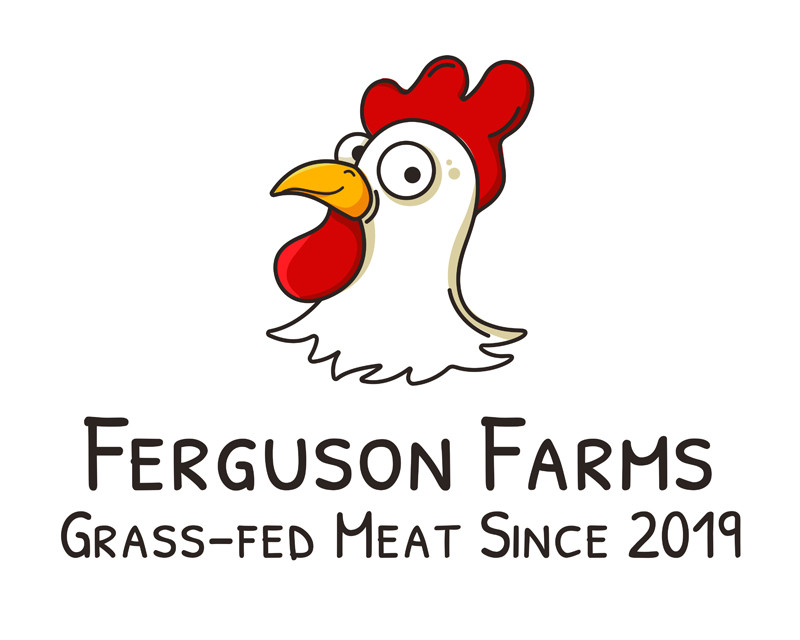Pasture-Raised vs. Grass-Fed
posted on
October 1, 2024
Pasture-Raised vs. Grass-Fed Meat | Ferguson Farms
Pasture-Raised vs. Grass-Fed: What’s the Difference?

When it comes to making informed decisions about meat, terms like pasture-raised and grass-fed can often lead to confusion. Both of these labels refer to how animals are raised and what they consume, but there are important differences that impact the quality of the meat, animal welfare, and environmental sustainability. At Ferguson Farms, we are committed to transparency and helping you understand these distinctions so you can make the best choices for your health and values.
In this blog, we will explore the differences between pasture-raised and grass-fed animals, explain how these farming practices impact the environment, and help you determine which option is better for you.
1. What Does Grass-Fed Mean?
Grass-fed beef refers to cattle that are primarily fed grasses and forages throughout their lives. However, the term can sometimes be misleading, as not all grass-fed cattle are exclusively fed grass. Some cattle labeled as grass-fed may be finished on grains during the last stage of their lives, typically in feedlots, to increase fat content and marbling.
Key Characteristics of Grass-Fed Beef:
- Natural Diet: Grass-fed cattle eat primarily grasses and other forages for most of their lives.
- Grain Finishing: Some grass-fed cattle are finished on grains, which can alter the flavor and nutritional content of the meat.
- Higher Omega-3s: Grass-fed beef is higher in omega-3 fatty acids compared to grain-fed beef, making it a healthier choice for heart health.
For more information on how grass-fed beef stacks up against grain-fed options, check out our post on Grass-Fed vs. Grain-Fed Beef.
2. What Does Pasture-Raised Mean?
Pasture-raised refers to the way animals, such as cattle, poultry, or pigs, are allowed to roam freely on pasture. This means they spend the majority of their lives outdoors, eating grass, plants, and insects. Unlike grass-fed cattle, pasture-raised animals are not necessarily restricted to a grass-only diet. Depending on the species, they may also receive supplemental feed, but the emphasis is on their access to open pastures where they can graze naturally.
Key Characteristics of Pasture-Raised Animals:
- Access to Outdoors: Pasture-raised animals live in a more natural environment, spending their days grazing and foraging.
- Flexible Diet: While the animals eat grass and forage, they may also receive additional feed depending on the farming practices.
- Better Welfare: Animals raised on pasture have lower stress levels and are healthier due to the natural living conditions, which results in higher-quality meat.
For a deeper dive into the benefits of pasture-raised farming, explore our blog on What Does Pasture-Raised Mean.
3. Health Benefits: Pasture-Raised vs. Grass-Fed
Both pasture-raised and grass-fed beef offer superior nutritional value compared to conventional meat products, but there are some key differences between the two.
Grass-Fed Beef:
- Higher in Omega-3s: Grass-fed beef is rich in omega-3 fatty acids, which are known to improve heart health, reduce inflammation, and support brain function.
- Higher in CLA: Grass-fed beef contains more CLA (Conjugated Linoleic Acid), a beneficial fatty acid that may help reduce body fat and improve immune function.
- Leaner Meat: Grass-fed beef tends to be leaner than grain-fed beef, with fewer calories and less saturated fat.
Pasture-Raised Meat:
- Better Flavor: Pasture-raised animals tend to produce meat that is more flavorful due to their natural diet and free-range lifestyle.
- Nutrient-Dense: Meat from pasture-raised animals is often richer in vitamins like vitamin E and beta-carotene, as well as antioxidants.
- More Ethical: With improved living conditions, pasture-raised animals live in lower-stress environments, leading to healthier, higher-quality meat.
For more insights into the health benefits of choosing ethically sourced meat, check out our blog on Ethically Sourced Meat.
4. Environmental Impact: Pasture-Raised vs. Grass-Fed
Sustainable farming practices play a major role in both pasture-raised and grass-fed systems. However, there are some distinctions in how these methods affect the environment.
Sustainable Grazing with Grass-Fed Systems
Grass-fed cattle are often raised using rotational grazing, where they are moved between different sections of pasture to prevent overgrazing. This helps:
- Improve Soil Health: Rotational grazing promotes plant growth, enriches the soil, and prevents erosion.
- Sequester Carbon: Healthy, grazed pastures can sequester carbon in the soil, helping to reduce greenhouse gas emissions.
Biodiversity and Pasture-Raised Farming
Pasture-raised systems contribute to increased biodiversity. By allowing animals to graze freely on open land, the ecosystem becomes more balanced, promoting the growth of various plant species and creating habitats for other wildlife. Additionally:
- Reduced Reliance on Grain: Unlike grain-fed operations, pasture-raised animals do not require large-scale grain production, which reduces environmental stress caused by monocropping and deforestation.
- Water Conservation: Pasture-raised systems typically use less water than feedlot-based grain systems, making them a more sustainable option.
To learn more about how sustainable farming practices impact the environment, visit our blog on Sustainable Farming Practices.
5. Animal Welfare: Why Pasture-Raised is More Humane

One of the primary advantages of pasture-raised systems is the emphasis on animal welfare. Allowing animals to roam freely on pasture means they can engage in natural behaviors, which reduces stress and improves their overall well-being. In contrast, grass-fed cattle may still end up in confined feedlots during the finishing stage, depending on the farm’s practices.
Pasture-Raised: Ethical and Humane
- Free-Range Living: Animals are not confined to feedlots and are given ample space to move and graze.
- Healthier Animals: Animals raised on pasture tend to be healthier, reducing the need for antibiotics and hormones.
For more on how animal welfare practices improve meat quality, check out our post on Ethically Sourced Meat.
6. Flavor Profile: Grass-Fed vs. Pasture-Raised
The flavor of meat is another important factor when deciding between pasture-raised and grass-fed. Both types of meat have distinct flavor profiles that come from the animals' diets and living conditions.
Grass-Fed Flavor
Grass-fed beef has a leaner, more robust flavor with earthy undertones. It may require special cooking techniques, such as slow cooking or grilling at lower temperatures, to ensure tenderness.
Pasture-Raised Flavor
Pasture-raised meat, especially from chickens or pigs, often has a richer, more complex flavor due to the diverse range of plants, insects, and forages consumed. The meat tends to be more tender and juicy.
To discover recipes that highlight the unique flavors of these meats, explore our recipe page.
Conclusion: Which Should You Choose?
Both pasture-raised and grass-fed meat offer significant health, environmental, and ethical benefits compared to conventional farming methods. However, if you are looking for more ethically raised animals with the freedom to roam and a varied diet, pasture-raised meat may be the better option. On the other hand, if you’re specifically looking for leaner meat with a higher concentration of omega-3s, grass-fed beef is a great choice.
At Ferguson Farms, we offer both pasture-raised and grass-finished meat options, ensuring that you can enjoy the best quality meat while supporting sustainable and humane farming practices. Explore our selection today and taste the difference for yourself.
For more insights into sustainable and ethical farming, check out our blogs on Sustainable Farming Practices and Ethically Sourced Meat.




